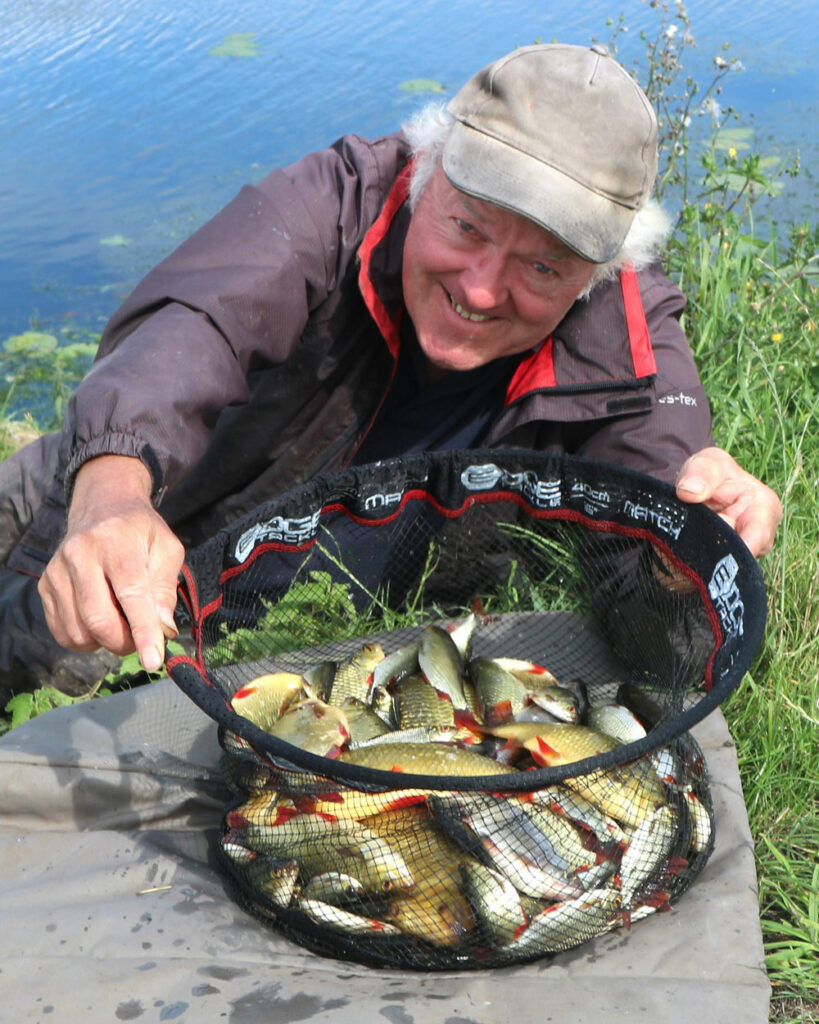When and Why You Should Make Tackle Changes
The Junction
After moving to the heart of fenland, I quickly realised my fishing gear needed a serious revamp. It wasn’t up to the demands the new type of venue I was exploring threw up. I found the drains were packed with fish, but also very weedy. On early outings, I didn’t have the right equipment to cope. I spent hours hauling in rigs covered with green debris, struggling to land bigger fish due to the heavily overgrown nearside margins. On top of that, the awkward sloping banks most places presented, made my seat box very unsteady. Its 30mm legs and footplate were not man enough. My bait table wasn’t up to the task either. It was time to seek some good local advice, which I gratefully received when I visited the superb tackle shop at Rookery Waters. Alex Bates and his dad proved a mine of knowledge when it came to fishing the fens, firmly putting me on the right track.
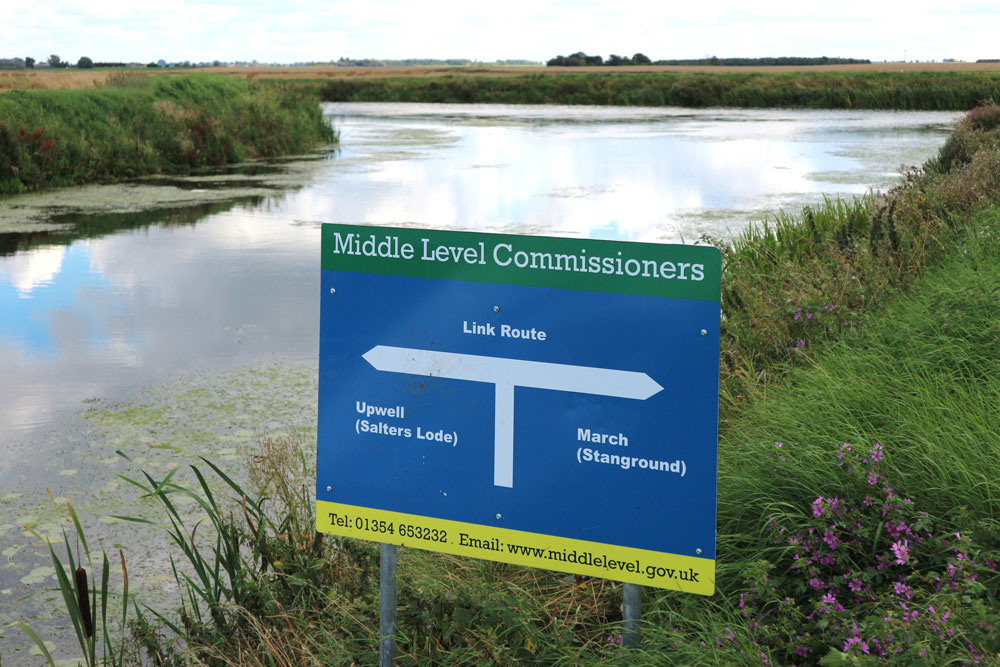
Raking It
I spent hours looking at garden rakes that might convert into what I needed to clear weedy swims, but couldn’t find anything suitable. In the end, I sent a drawing to a pal who’s an engineer, and he managed to get a welder to make what I required. It’s a double-sided rake and has a handle to provide a decent throwing grip. Combined with 15 metres of strong rope, it works a treat, although a tad heavy, making 12 to 13 metres is its maximum range. But that’s enough to clear the inside line on most drains and adequate for pole or whip tactics, also making it a lot easier to land big fish once they near the landing net stage. It’s amazing how much underwater and surface growth I can drag out with a dozen throws. On this occasion, swim clearing after a long walk in the flat fen fields, I quickly ended up with a huge mountain of weed next to my seat box and bait tray.
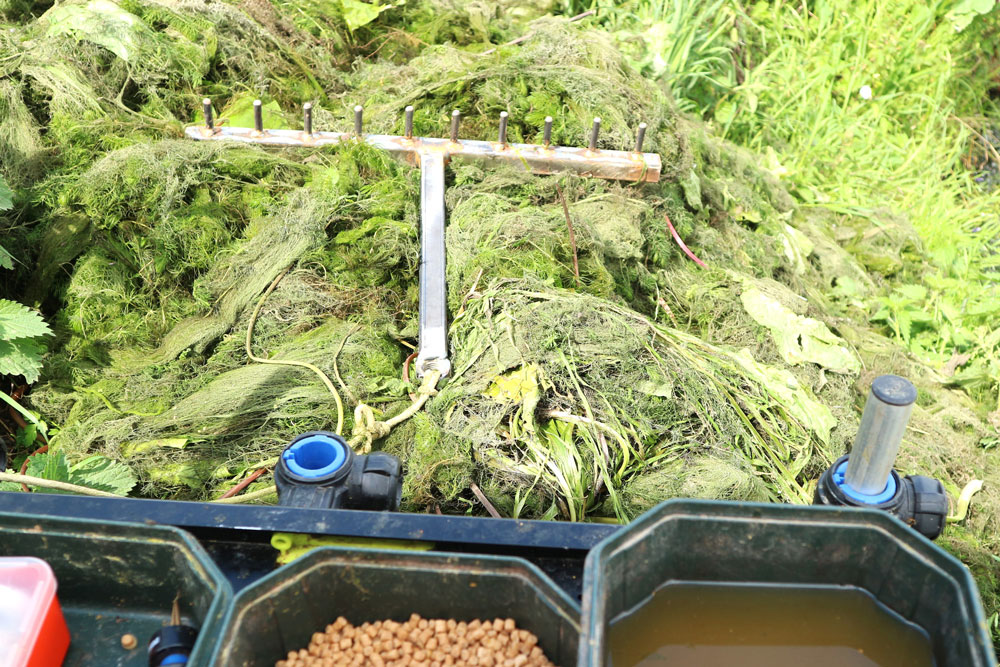
Getting Comfortable
As previously mentioned, my old seat box, with its jittery legs and temperamental footplate, was totally inadequate to deal with sharply sloping fenland banks. I opted for a new H frame style set-up: the Matrix XR-36. This is bulkier than I’m used to, but once levelled over awkward terrain, it’s incredibly stable. It has a much easier to operate cassette style footplate, although I haven’t needed to use that part yet. Another bonus aspect was the original trays and drawers from my early Fox Match seat box fit the new one. There’s no conventional deep base storage area, but by adding a spacer to the built-in tray in the frame, I can just squeeze reels and other bulky items in. The rest comprises drawers and winder trays. I also opted for the Matrix Extending Side Tray, using it as a freestanding bait table, by utilising the two legs it came with and a pair from my old box.
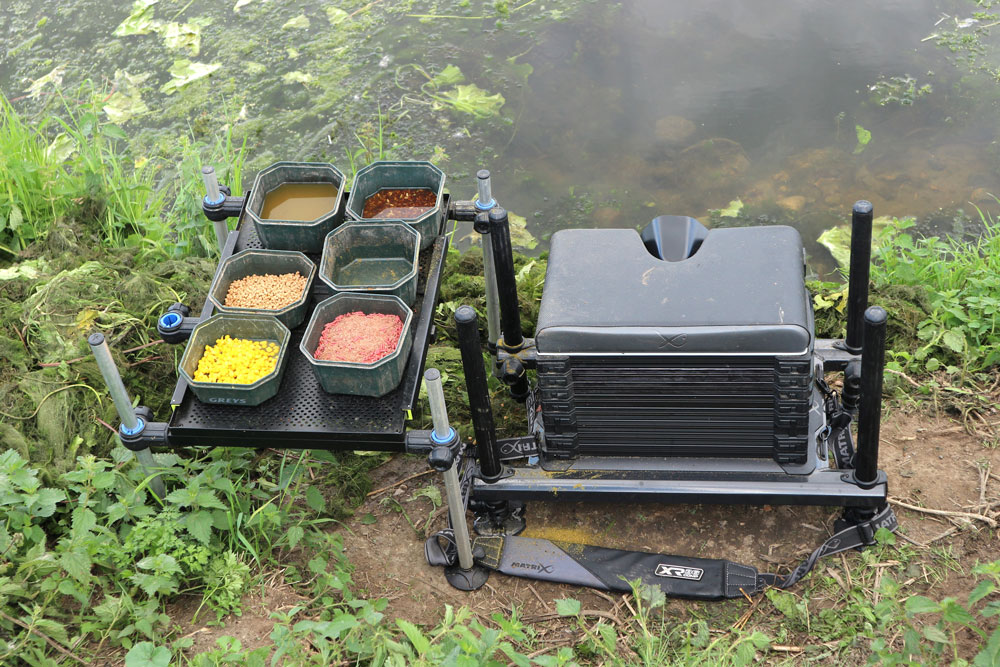
Load Shifting
The only trouble with moving bulkier gear from A to B is figuring new ways of carrying it. The car aspect sorted itself out when my favourite old banger failed to get through its MOT. I upgraded to something bigger, almost van like, so room wasn’t a problem. But my old trolley couldn’t cope any more, forcing me to look at the barrow option. I opted for the Preston 4 Wheel Shuttle, which is perfect for all the new gear I’ve been accumulating. It’s a lot easier to shift everything on a barrow, providing there are no fences or locked gates, where everything has to be unloaded to get over them. I’ve walked many miles with my new transporter, which has opened many far-off places to explore, without even breaking into a sweat in most cases. Thinking back over some epic long walks match pegs have taken me to, I regret I didn’t make this change a long time back.
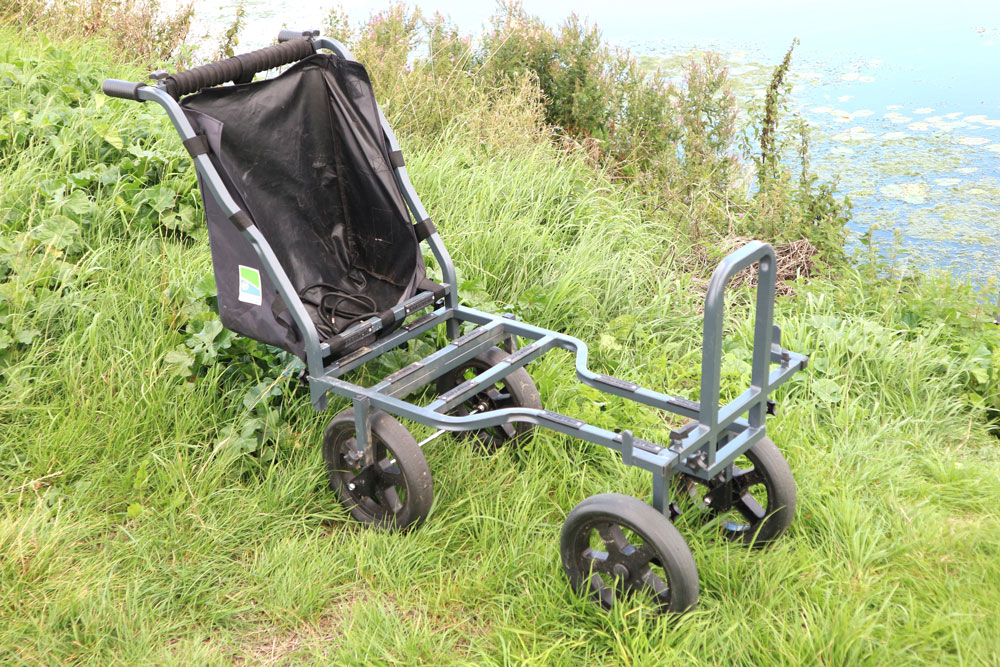
Spooling Up
Working in product development for several fishing companies over the years, I got to see and test out some novel tackle accessories. This hook length storage box nearly made it, but was stymied by having too high minimum order quantities to get its foam discs changed to a sensible colour. They were originally a weird pinkish/orange hue, looking awful. I changed the ones in my sample by dying them black. There was another issue with the hinges on the box, which were as sharp as razor blades, but I sorted that out with a file. It’s actually a very handy product now, storing loads of hook lengths – particularly short fluorocarbon ones – in a very compact manner. I can load several end tackles on each spool. These are anchored in place with small mapping pins. The outer clear plastic box locks together with small magnets and stores away compactly like a small book.
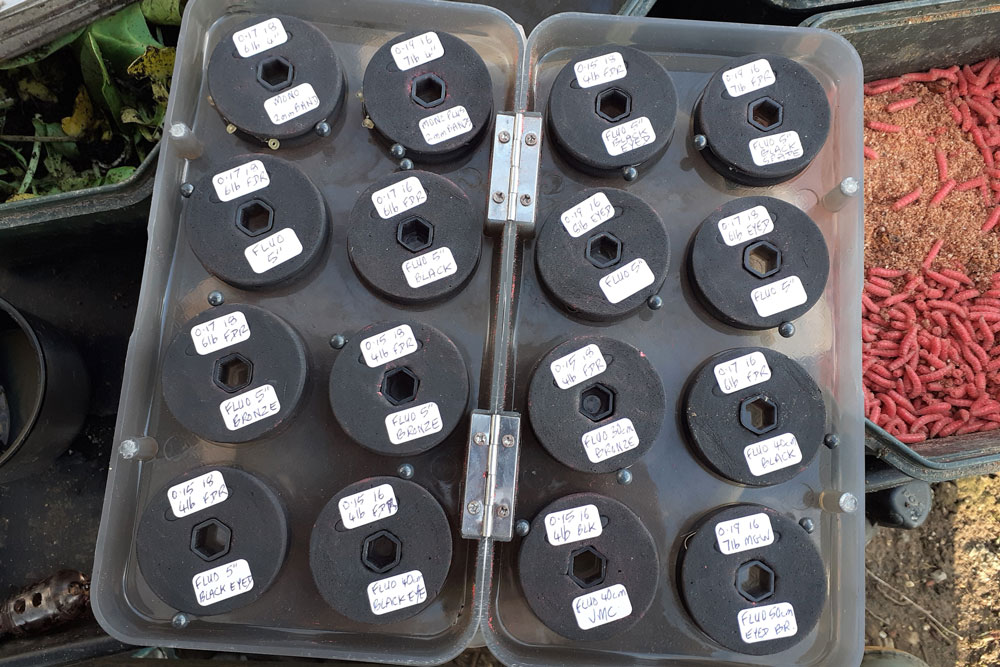
Another Arm
Changing something important, like a seat box, leads you to find out the expensive way that some of your other gear isn’t compatible. My old feeder arms only fit 30mm legs, so I had to buy this model that handles up to 36mm diameters with its insert removed. It boasts a click on and off top threaded section, which is quite clever. But I don’t really need a quick-change facility and would only use it if a spare head was supplied. The leading end is angled upwards, a more practical feature, making shallow multi division quiver rests stand well proud of the main support bar. There is angle adjustment at the seat box end of the arm, but like most designs, one click changes the tilt too much. This annoyingly means having to keep adjusting the arm up and down its support leg, to get rods positioned exactly how you want them, so a quivertip is hovering just above the surface.
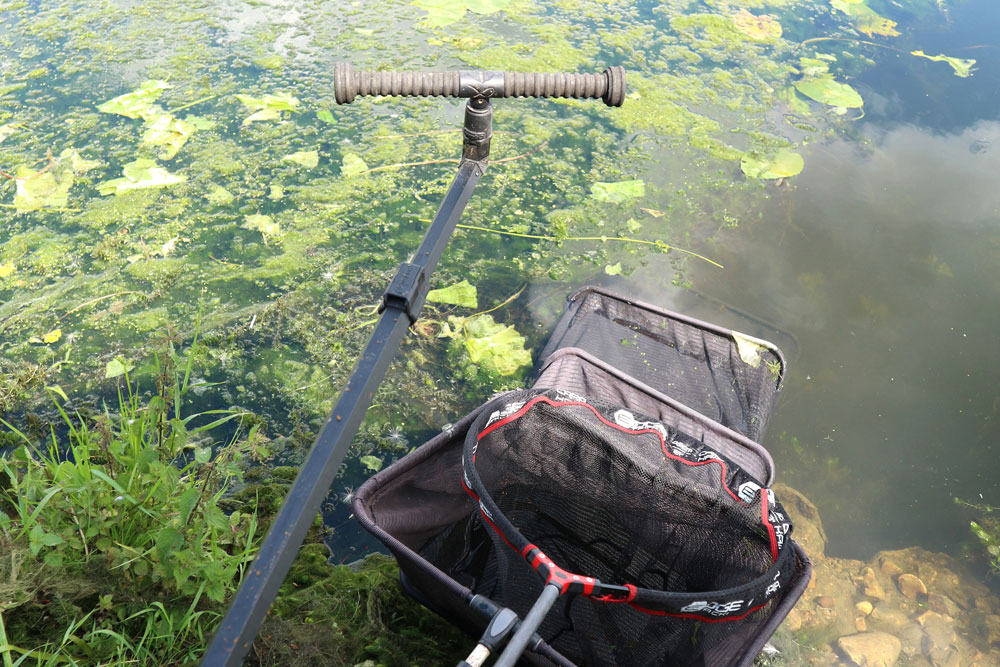
Pole Box
This is a mate’s neatly arranged pole protection box, a product I immediately liked the look of. Having your main pole and numerous top kits, along with any other spare sections, all housed in a hard case makes good sense. Velcro straps and mesh retainers keep everything neatly presented, so you can quickly get at what you want. This is better than having many plastic tubes swilling about in your main holdall, which considerably increases the amount of storage space required. But then, if you manage to get the pole box into a holdall, there’s not much room left for other vital gear like rods, an umbrella, landing net handles and bank sticks. I now see anglers lugging around a mix of pole cases and conventional holdalls. This makes space tight in both vehicles and on barrows. I, too, have one of these trendy new pole carriers, but haven’t settled on the best way to incorporate it yet.
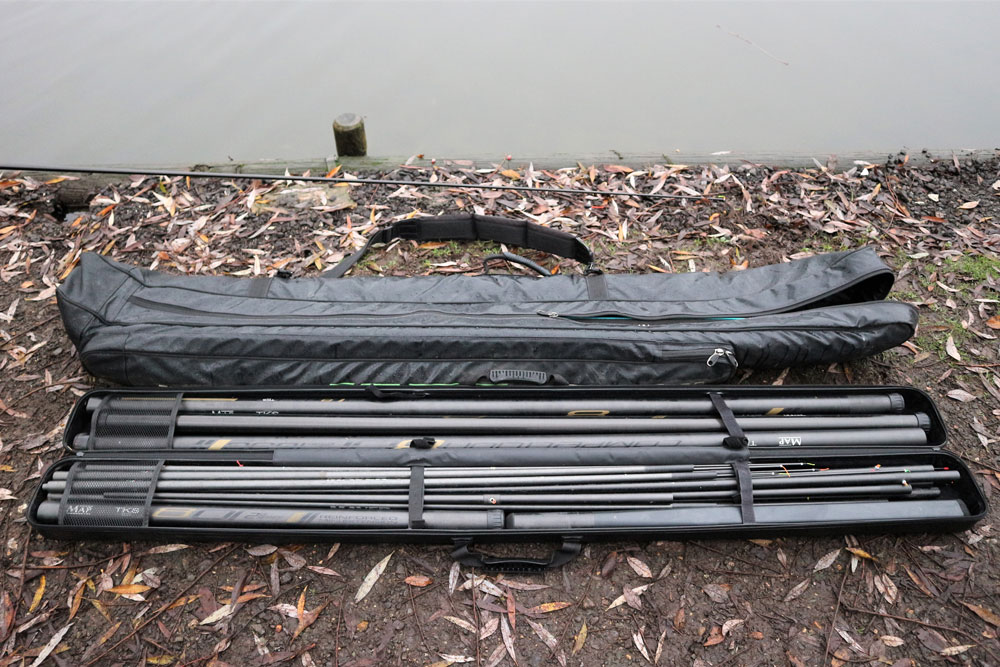
New Whip
My favourite whip is over 20 years old, still usable, but well-battered to say the least. Fishing to-hand style remains popular on the fens, leading me to get a Cadence CP200 9 Metre Whip. It’s lightweight and yet positive in action. So far, I’ve used it at 5m, 6m and 7.5m lengths, finding this high modulus carbon product excellent. You will be able to read about my first-ever outing with this pole on the Cadence website pages very soon. It was a hectic session with a couple of big surprises that turned up. Whip fishing has become something of a forgotten art to many, but it’s still a super fast way of bagging up, no other method can keep pace with. It’s also a very enjoyable way of fishing. Using a flick tip provides an extra feel factor, while feeding regularly stirs lots of fish into action. I first mastered this tactic over in Ireland, but now I’m finding remarkably similar good results over here.
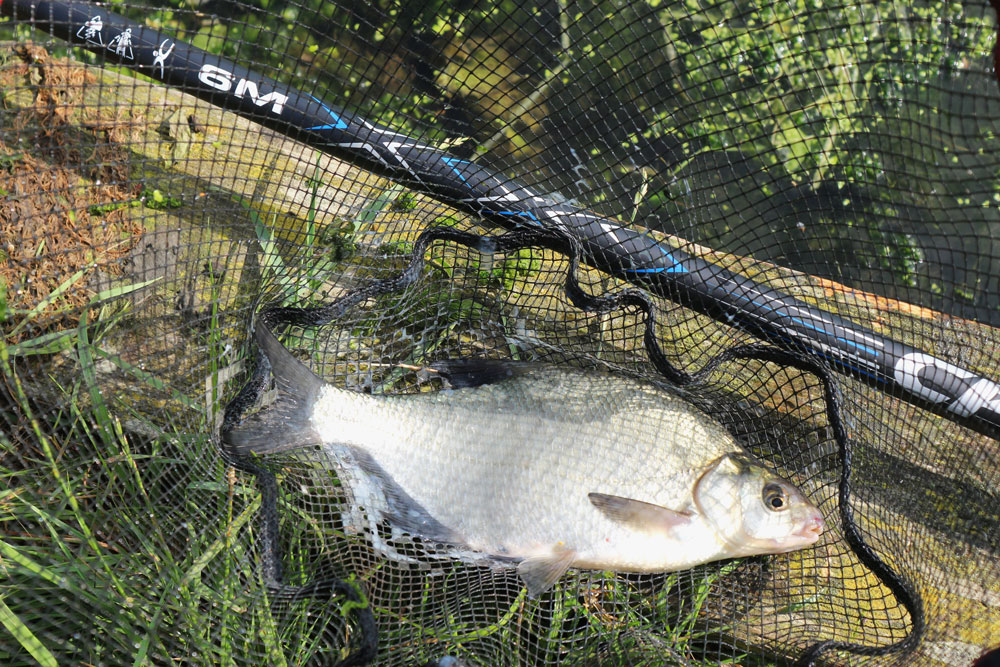
Elastic Evolution
Before Edge Tackle brought out their pole elastics, I was already a convert to the new solid hybrid variant. This form of highly coloured latex is super stretchy, which means in thinner gauges it lands you a lot more bonus fish. I’ve never like using extra thick hollow elastics anyway, finding they can be heavy and make the power kits in long poles sag quite considerably. This slows down responsiveness and misses you many bites. I’d rather fish finer and enjoy more action, knowing the new breed of hybrid shock absorber redresses the situation, particularly when used with a puller bung system. With Edge Solid Hybrid Elastics, you get 6m of elastic in a pack at a competitive price. I particularly like the 3-4, 4-6 and 6-8 gauges, which I use for most of my general fishing. The thinner diameters are superb for bagging hauls of silver fish, but equally capable of dealing with big tench, bream, perch, or carp.
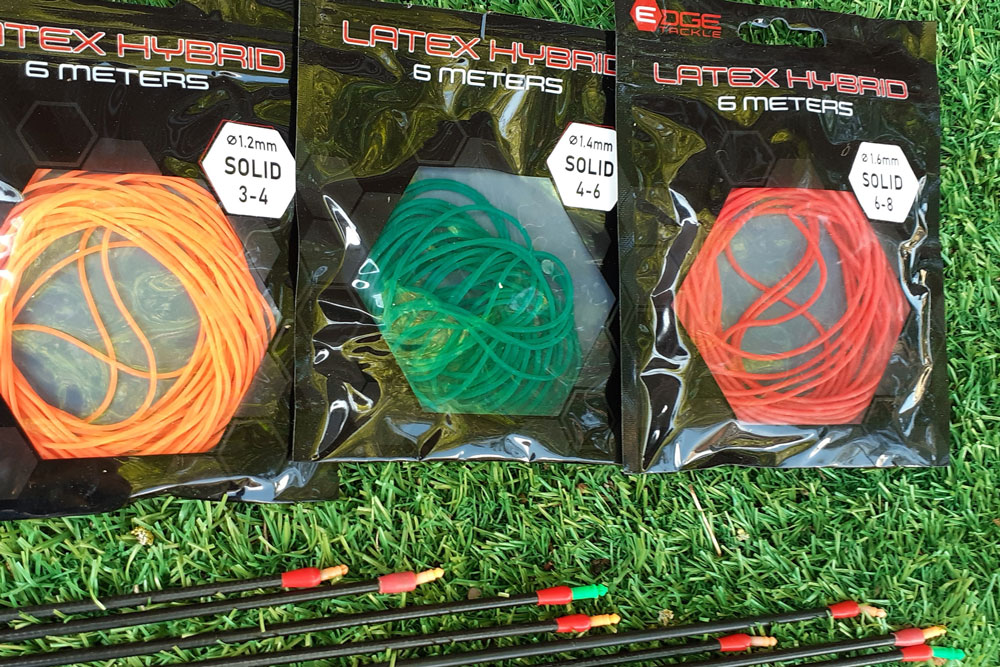
Wish List
I thought I had updated everything I wanted, but then I saw a mate using a pole sock, which reminded me I probably need to get one of these. With high sloping banks on many of the drains I now fish, pole sections have to be unshipped at a sharp angle upwards. This could be over a roller, or using a grassy bank behind. It’s often windy, so with several expensive carbon pole sections pointing towards the water, a safety net is a sensible way to go. Until now, I’ve improvised, using the open side pocket on my carryall, carefully positioned to anchor the leading end of unshipped sections in. But the angle is now too severe to do that. The only problem with a pole sock, is I don’t like anything impeding my fishing space. That’s why until now, I’ve avoided items like bump bars, accessory arms and the like. A pole sock will also require having a support arm fixed to my seat box.
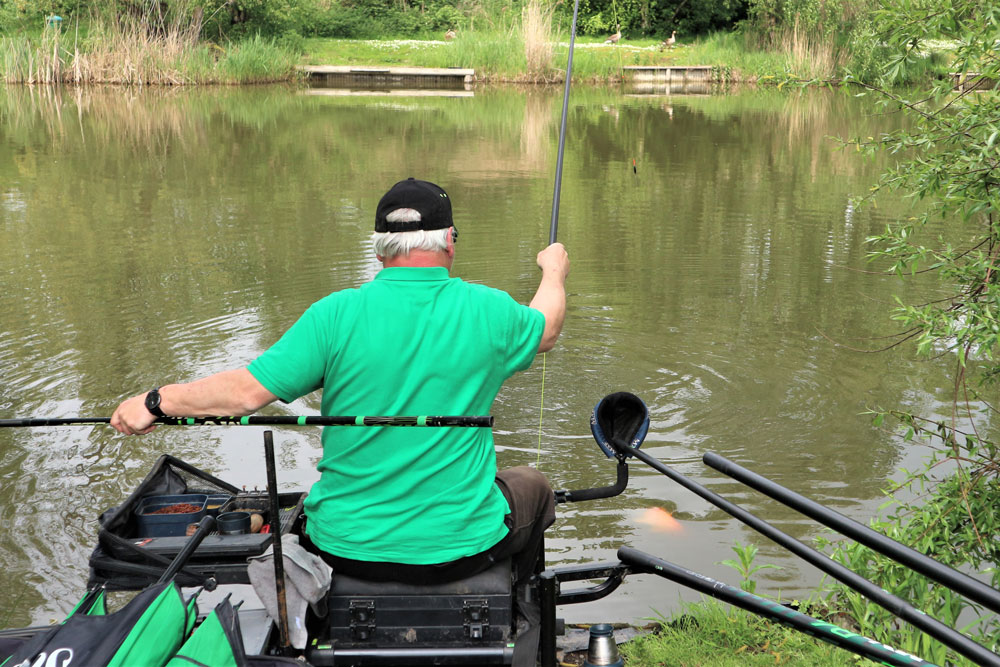
Busy Banding
Finding the drains where I now live heaving with small fish, a change of tactics was called for. Baits like maggots, casters, and worms were blitzed to pieces. Soft hooker pellets didn’t solve this problem either, while tinned sweetcorn was often too big for fish like rudd and skimmers. I started experimenting with banded 4mm hard pellets and this trick worked a treat. I still fed baits like maggots, casters, or hemp to begin with, but also started introducing a few 3mm or 4mm feed pellets. Once plenty of bites were happening, a banded 4mm hard offering on the hook normally got through the small stuff and found much bigger fish lurking underneath. Simple light-brown pellets worked well, with not too much oil or heavy flavouring. Soft, stretchy latex bait bands proved best. I shop around for these because prices vary from £1.99 to a whopping £3.49!
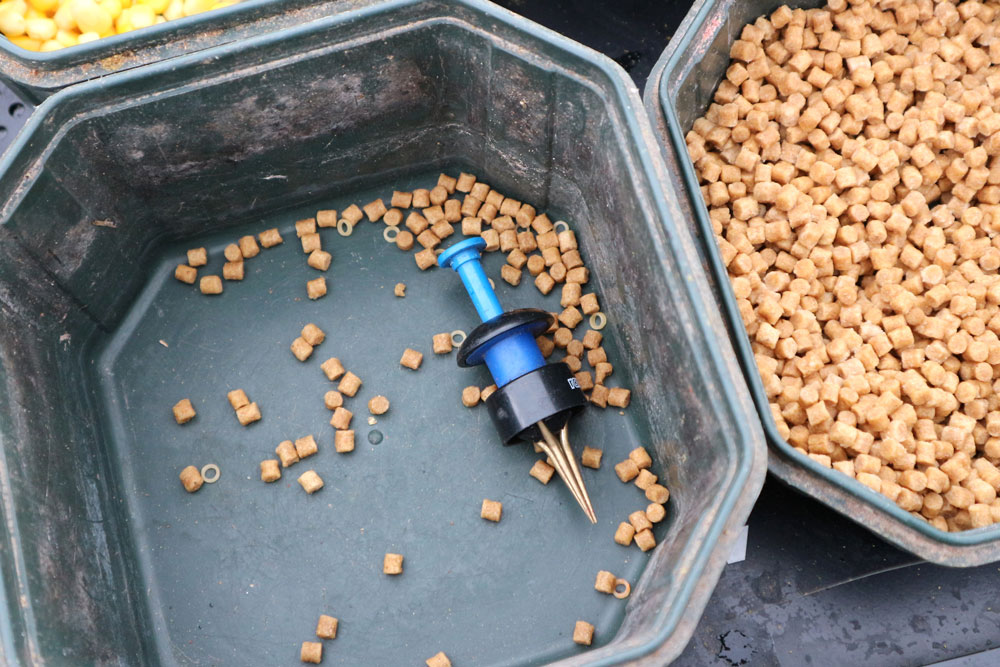
Better Results
I’ve put lots of effort and money into updating my fishing gear, finding it tricky changing major items like seat boxes, luggage, and the like. It takes time to get used to where everything goes, such as how it’s arranged in your car, stacked on a trolley or barrow, or eventually set up when you get to your peg. I got there in the end and consider the whole exercise worth it. I’m now a lot more comfortable out on the bank, plus I’m catching loads more fish. On reflection, I needed a big change because all my gear over the past two decades has been assembled for entirely different ways of fishing, both up north and in the midlands. It’s very different out in the flat lands of the east, but I’m loving every minute of it. I’ve learnt you can tinker with new venues, but only get a glimpse of their true potential if your tackle and bait isn’t right. Get it right and a whole new world opens up.
